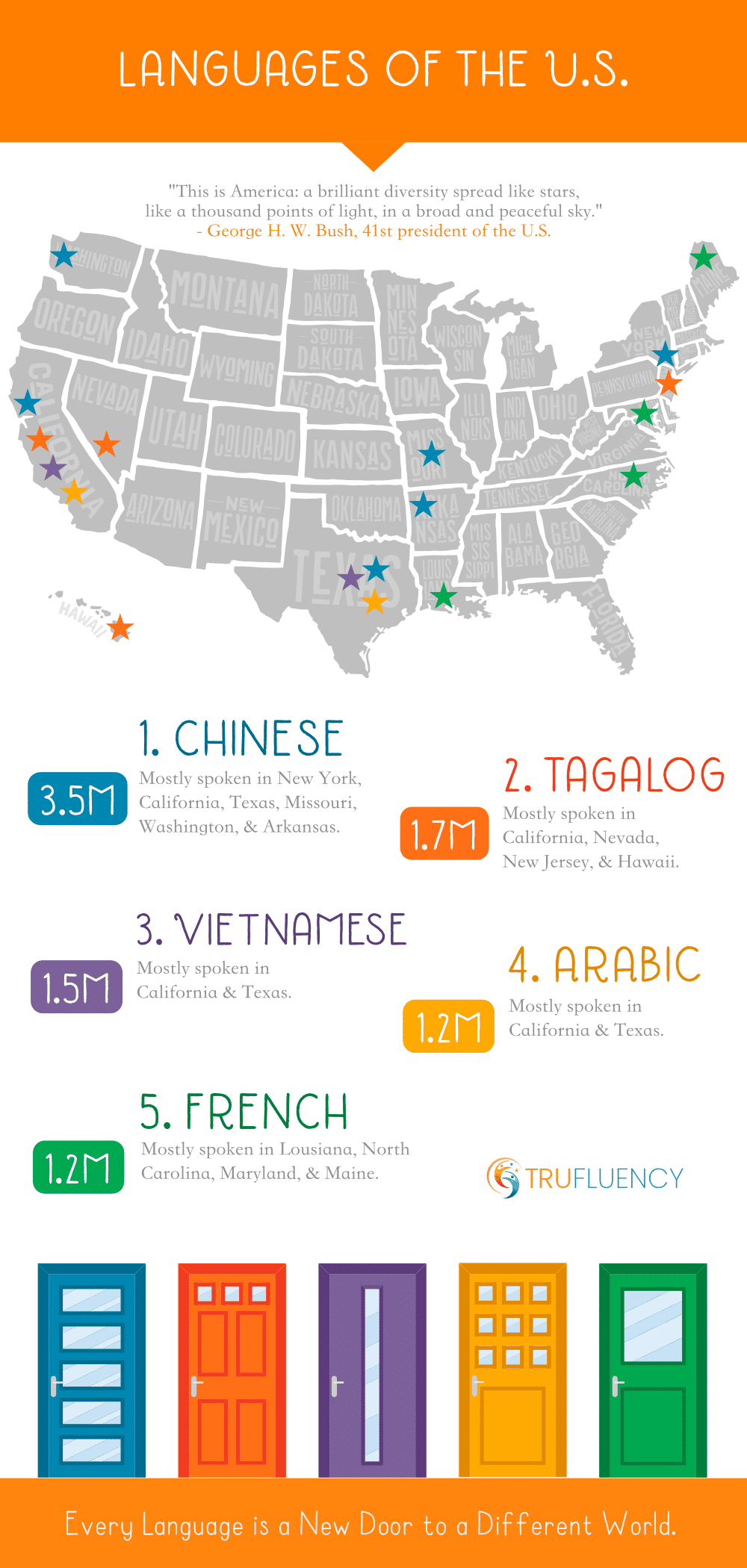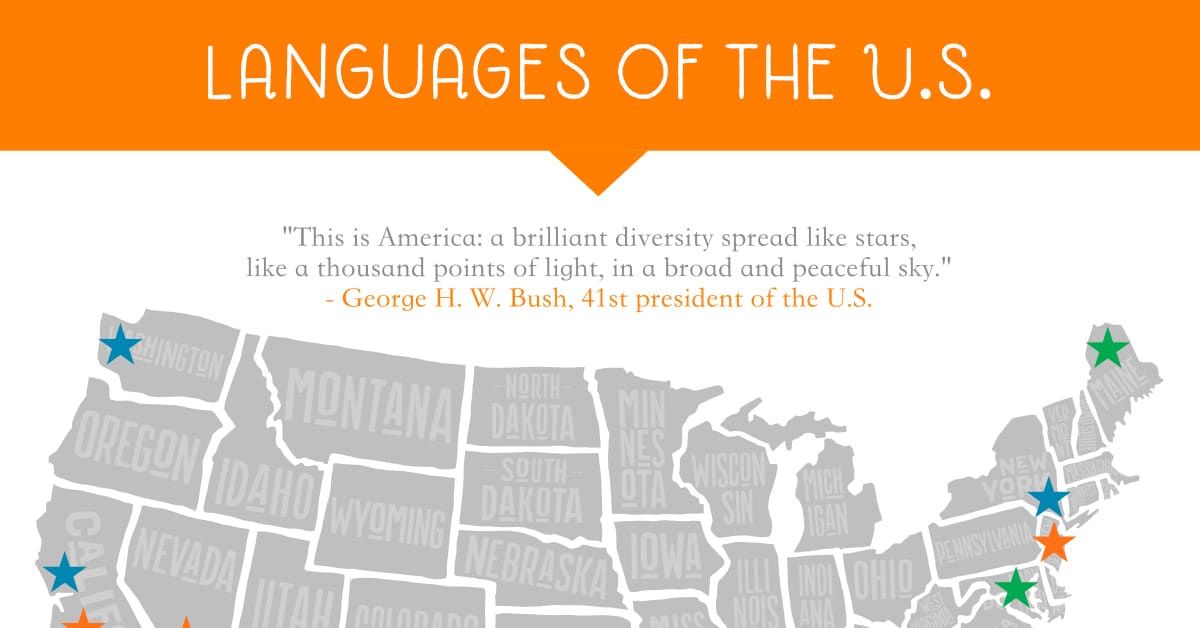The United States of America is one of the most diverse countries in the world. Many ethnic groups and people of different walks of life, migrated to the US to achieve a better experience. And with this mass migration from across the globe, comes a wide array of cultures, cuisines, dance, music and, yes, languages.
The United States of America is home to a diverse collection of languages, some more popular than others. This popularity also varies depending on the states. Using the American Community Survey (ACS) data, compiled by the US Census Bureau, we can easily break down the most common languages spoken at home. Also, in this post, we won’t include English or Spanish, since they are the more widely spoken languages in the US, standing at 239 million and 41 million, respectively.

Share this Image On Your Site!
Please include attribution to TruFluency.com with this graphic.
1. Chinese (including Mandarin and Cantonese) – 3.5 million
Mostly spoken in New York, California, Texas, Missouri, Washington, and Arkansas.
With the first Gold Rush dating back to the 18th century, many Chinese immigrants flocked to the US from Mainland China, with hopes of achieving the American Dream. Chinese immigrants created a comfortable life in San Francisco, giving birth to the oldest Chinatown that is still thriving today. These numbers gradually grew as China gained a major foothold in the global economy. And more Chinatowns started to pop up in New York and Texas. Today, New York is home to the largest Chinese population in the US.
We suggest booking out several months of classes (at least 1 at a time), so that you have your plan for the month. Then, on the 15th, book out the next month of classes. That’s what we do. So far, I’ve taken 2000 hours of Spanish, 450 hours of French and closing in on 700 hours of Japanese. All of this just by scheduling one month at a time. Don’t look too far into the future, or you’ll quit. Trust me.
Vietnamese – 1.5 million
Mostly spoken in California and Texas.
After the Vietnamese war, more and more Vietnamese sought refuge in the US. There was also a massive jump in immigration between 2000 and 2015 because they wished to reunite with their families in the US. Today, the vast majority of Vietnamese immigrants live in California and Houston, Texas.
Arabic – 1.2 million
Mostly spoken in California and Texas.
Did you know that the Arabic language is the fastest growing language in the US? According to the Pew Research Centre, this population has increased by 29% from 2010 to 2014 and will continue to grow due to immigration. What’s more, the Arabic language is very fascinating language to learn since it has unique variations and is accompanied by a rich and vibrant culture.
French – 1.2 million
Mostly spoken in Louisiana, North Carolina, Maryland, and Maine.
Dating back to a memorable part of the US past, the Louisana Purchase, the French culture and language has deep roots in US history. With the Lousiana Purchase, the French Creole language was born from a mixture of the West African and French languages. Still, the number of French speakers far outweigh that of French Creole speakers. Today, we have to thank the French for adding their vocabulary to the English vocabulary. Americans can easily make daily use of fun French words, such as déjà vu, Fiancé, Papier-mâché, and so many more!
Every Language Is A New Door To A Different World
As the American nation and population continue to grow, so will the level of diversity. It is now our turn to welcome the immigrants warmly aim to learn more about their way of life, language, and background. We ought to do this to create new experiences and memories and to grow our skills and mindset. Also, we encourage you to take part in national censuses and surveys, as it is a great way to keep theses data fresh and current.
And we have to apply this knowledge to the best as we can! Why? Because now that you understand the most widely spoken languages in the US, you can make a better decision on what language you would like to learn next, both for you and your team.
If you are ready to take the first step, then feel free to contact us, we are happy to help!





